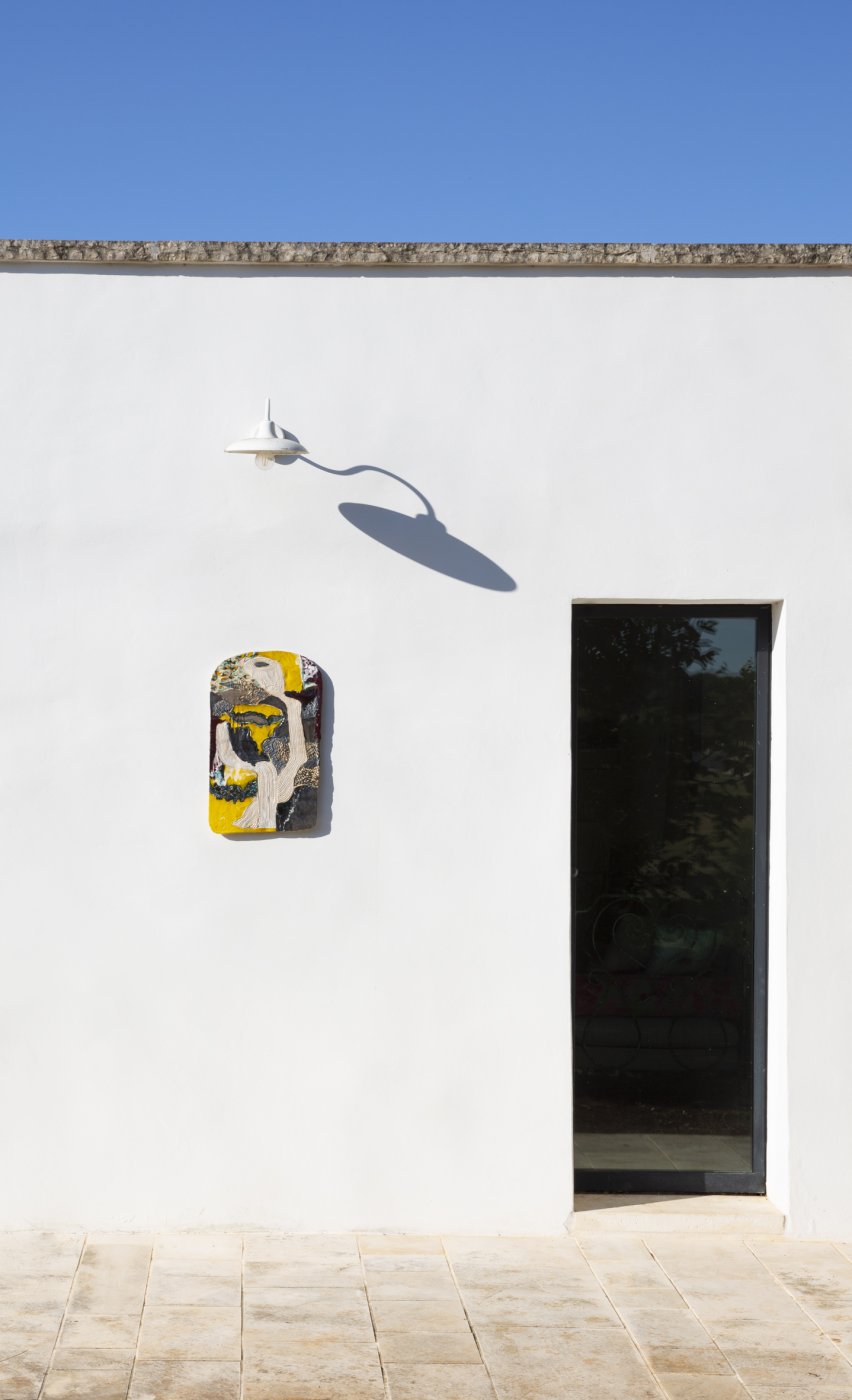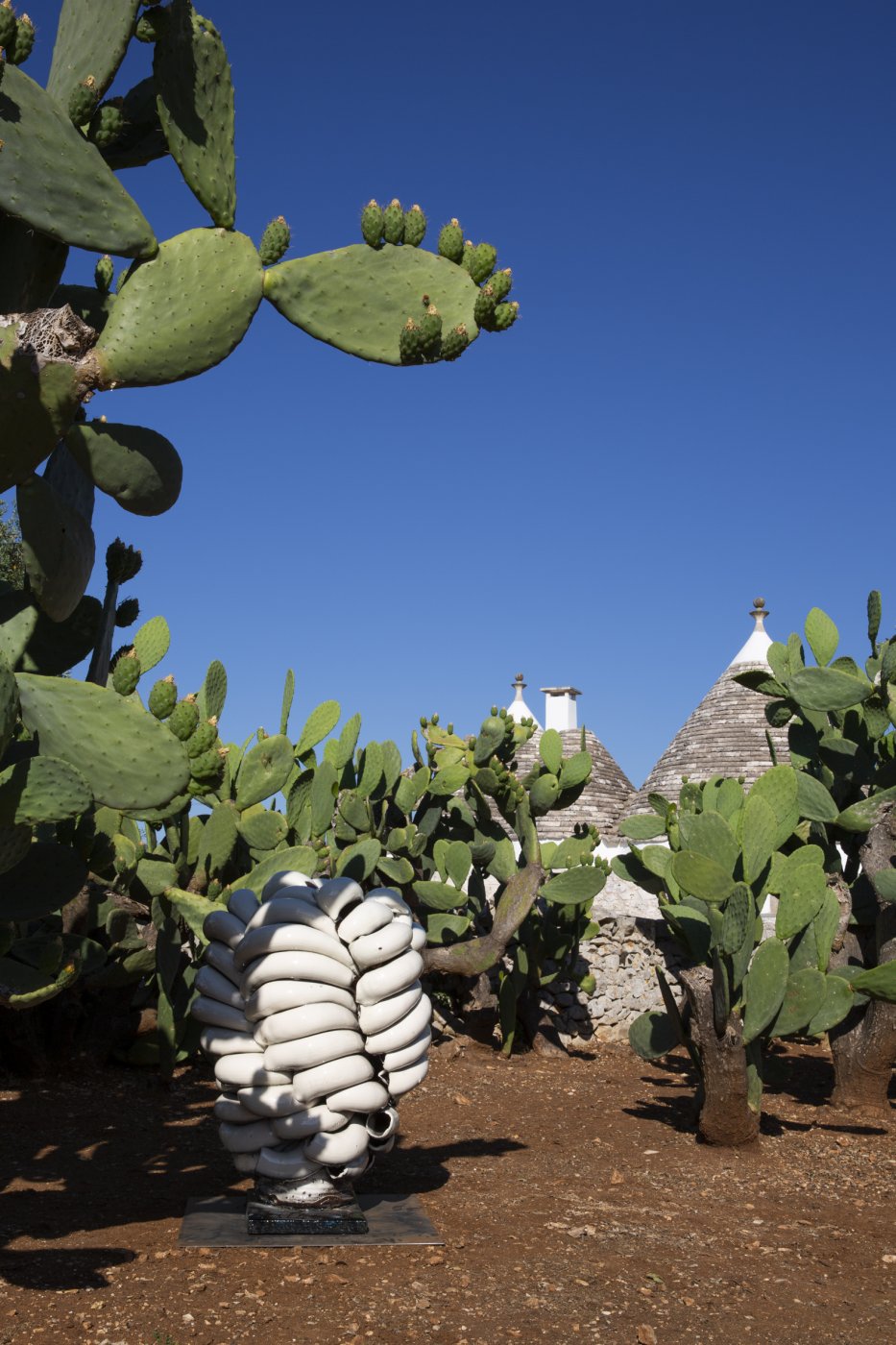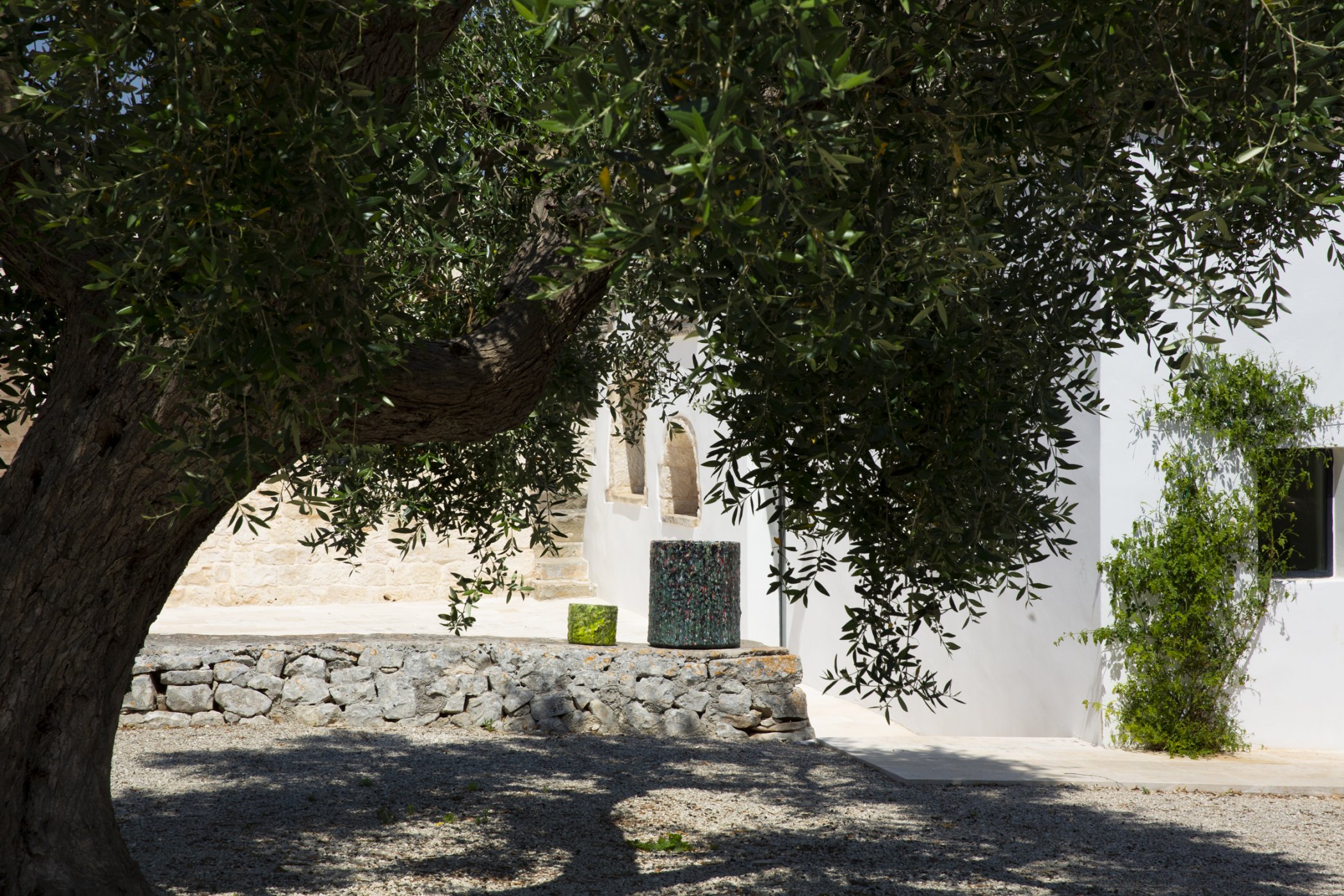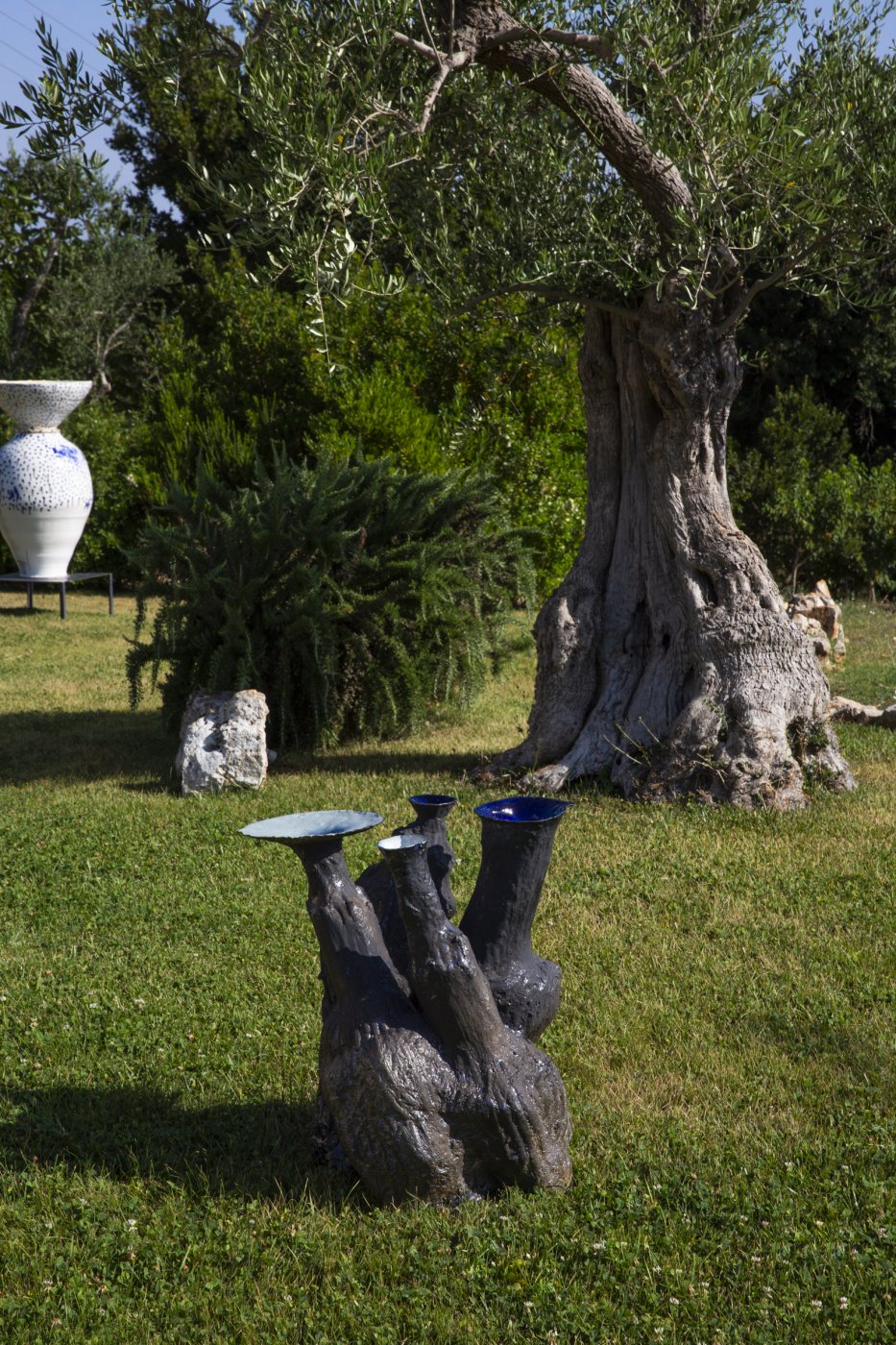Morfologia delle Meraviglie
Officine Saffi lands in Puglia for a pioneering contemporary art project. This will take place in an exceptional location: a large park, among the "Trulli" houses of Ostuni, based in the epicentre of the Itria Valley. It will host a unified exhibition displaying ceramic artworks created by some Italian and international artists, along with a supporting programme of performance and workshops.
For the past 8 years, Officine Saffi has been promoting the role of ceramics in contemporary culture. The project is based on the dialogue between the tradition inherent to the material and the search for a contemporary language that can be expressed through art, design and high craftsmanship. "Officine Saffi's event in Puglia - states the founder of Officine Saffi, Laura Borghi - is part of this line of research.
This project is not going to be a one-off event, but aspires to be a fixed appointment of the Apulian summer, to explore suggestive places through the ceramic material".Morphology, in a linguistic context, studies the grammatical structure of words and classifies them in specific categories. However, in this exhibition, it highlights the wonder that exists among different sculptural experiences, which share the same attention to construction (and its decay) of the form, and a common linguistic root, to be found in the different techniques of the great ceramic archipelago.In line with the mission of Officine Saffi of Milan, the exhibition (together with its catalogue) offers an overview of different experiences related to international ceramic sculptures, created by artists coming from different part of the world.
The latter, by means of different approaches, investigate the characteristics of both form and matter. Thanks to this, they are able to create pieces that naturally connect with an exhibition space, which is mainly outdoor and in close dialogue with nature (prickly pears, olive trees, shrubs and other plants), and the ancient architecture of the Trulli houses, which distinguishes Itria Valley's agricultural landscape. It is there that the wonder referred to in the title of the exhibition is generated.
This is because visitors will be amazed by this space, filled with grandeur and smells."The discovery of this wonderful building was almost accidental, during a vacation made in Apulia in 2012. Although it was in a severe degradation, the desire of a restoration was almost immediate; after 18 months of consolidation and structural works, the result was to have succeeded, together with the local workers, in reviving a place rich in history and traditions. A magical place for me, perfect for hosting Morfologia delle Meraviglie” says Maria Borghi, landlady.The numerous trulli houses, that populate the estate, will be the setting of the exhibition.
With the help of a map, visitors will be invited to find their way, between indoor and outdoor spaces, to trace the presence of the artworks. These will be set up following a close connection between their forms and those of surrounding nature and architecture. This echoes what Jole de Sanna states in her fundamental essay - which will also be the basis of the theoretical reflection of this exhibition - Forma. L’idea degli artisti 1943-1997, (Shape. What artists think 1943-1997) "The form, the border of consciousness, starts from the senses and involves reason".As if it were a private collection, of articulated or rigorous forms, coloured or black and white, of great works or small objects.
This exhibition is a large space without boundaries in which obsessive visions and projects, belonging to different ways of searching for contemporary ceramics, exist.The exhibition aims to be the first appointment of a contemporary ceramic sculpture Festival, based in the Itria Valley. This, through exhibitions, workshops, talks and publications, intends to propose, annually, a programme dedicated to ceramic research.During the opening night, Loredana Longo will hold the performance Creative execution#3 Victory, at 8 pm. Explosions, strongly representative of her work, are a series of performances that see the installation of very intricate sets, which the artist will blow up and reassemble immediately after, showing the damage caused by the explosive.The ceramics that Loredana Longo will blow up during the evening, will be created by the crown jewel of the pottery art scene in Grottaglie: the "Bottega di Enza Fasano" (the workshop of Enza Fasano).During the summer, Officine Saffi will organise two workshops with the English artist Robert Cooper at Masseria Cervarolo (Cervarolo district, near Martina Franca). Cooper's working method consists of collecting fabrics and found objects, which he then assembles into sculptural works that become real storytelling objects. The artist brings something forgotten back to life, emphasising the beauty of the past by enhancing it into something new and unique.
For the past 8 years, Officine Saffi has been promoting the role of ceramics in contemporary culture. The project is based on the dialogue between the tradition inherent to the material and the search for a contemporary language that can be expressed through art, design and high craftsmanship. "Officine Saffi's event in Puglia - states the founder of Officine Saffi, Laura Borghi - is part of this line of research.
The gallery invited international artists and designers to work on the architecture and landscape, liaising with an environment, rich in cultural backgrounds, and with the local communities that are the protagonists of the recent Apulian creative explosion.
The exhibition aims to be a vessel full of stories, dialogues, relationships, wonders, for the enjoyment of both the local audience and for the ever growing number of foreigners.This project is not going to be a one-off event, but aspires to be a fixed appointment of the Apulian summer, to explore suggestive places through the ceramic material".Morphology, in a linguistic context, studies the grammatical structure of words and classifies them in specific categories. However, in this exhibition, it highlights the wonder that exists among different sculptural experiences, which share the same attention to construction (and its decay) of the form, and a common linguistic root, to be found in the different techniques of the great ceramic archipelago.In line with the mission of Officine Saffi of Milan, the exhibition (together with its catalogue) offers an overview of different experiences related to international ceramic sculptures, created by artists coming from different part of the world.
The latter, by means of different approaches, investigate the characteristics of both form and matter. Thanks to this, they are able to create pieces that naturally connect with an exhibition space, which is mainly outdoor and in close dialogue with nature (prickly pears, olive trees, shrubs and other plants), and the ancient architecture of the Trulli houses, which distinguishes Itria Valley's agricultural landscape. It is there that the wonder referred to in the title of the exhibition is generated.
This is because visitors will be amazed by this space, filled with grandeur and smells."The discovery of this wonderful building was almost accidental, during a vacation made in Apulia in 2012. Although it was in a severe degradation, the desire of a restoration was almost immediate; after 18 months of consolidation and structural works, the result was to have succeeded, together with the local workers, in reviving a place rich in history and traditions. A magical place for me, perfect for hosting Morfologia delle Meraviglie” says Maria Borghi, landlady.The numerous trulli houses, that populate the estate, will be the setting of the exhibition.
With the help of a map, visitors will be invited to find their way, between indoor and outdoor spaces, to trace the presence of the artworks. These will be set up following a close connection between their forms and those of surrounding nature and architecture. This echoes what Jole de Sanna states in her fundamental essay - which will also be the basis of the theoretical reflection of this exhibition - Forma. L’idea degli artisti 1943-1997, (Shape. What artists think 1943-1997) "The form, the border of consciousness, starts from the senses and involves reason".As if it were a private collection, of articulated or rigorous forms, coloured or black and white, of great works or small objects.
This exhibition is a large space without boundaries in which obsessive visions and projects, belonging to different ways of searching for contemporary ceramics, exist.The exhibition aims to be the first appointment of a contemporary ceramic sculpture Festival, based in the Itria Valley. This, through exhibitions, workshops, talks and publications, intends to propose, annually, a programme dedicated to ceramic research.During the opening night, Loredana Longo will hold the performance Creative execution#3 Victory, at 8 pm. Explosions, strongly representative of her work, are a series of performances that see the installation of very intricate sets, which the artist will blow up and reassemble immediately after, showing the damage caused by the explosive.The ceramics that Loredana Longo will blow up during the evening, will be created by the crown jewel of the pottery art scene in Grottaglie: the "Bottega di Enza Fasano" (the workshop of Enza Fasano).During the summer, Officine Saffi will organise two workshops with the English artist Robert Cooper at Masseria Cervarolo (Cervarolo district, near Martina Franca). Cooper's working method consists of collecting fabrics and found objects, which he then assembles into sculptural works that become real storytelling objects. The artist brings something forgotten back to life, emphasising the beauty of the past by enhancing it into something new and unique.





